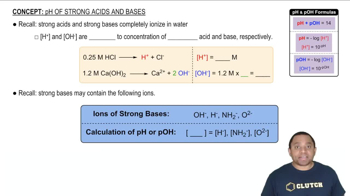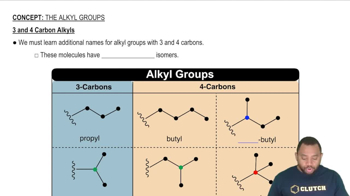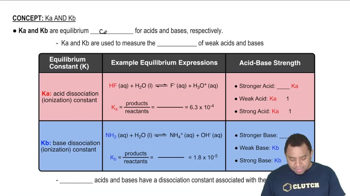Here are the essential concepts you must grasp in order to answer the question correctly.
pH and Acidity
pH is a measure of the hydrogen ion concentration in a solution, indicating its acidity or basicity. A lower pH value corresponds to higher acidity, while a higher pH indicates a more basic solution. Normal rain has a pH of about 5.6, which is slightly acidic due to dissolved carbon dioxide forming carbonic acid. Understanding pH is crucial for predicting how changes in CO2 levels will affect the acidity of rain.
Recommended video:
pH of Strong Acids and Bases
Carbon Dioxide and Carbonic Acid Formation
When carbon dioxide (CO2) dissolves in water, it reacts to form carbonic acid (H2CO3) through the equation CO2(aq) + H2O(l) ⇌ H2CO3(aq). This reaction is essential for understanding the chemistry of rainwater, as increased CO2 levels lead to more carbonic acid formation, which in turn lowers the pH of rainwater. This concept is fundamental for calculating the expected pH changes with varying CO2 concentrations.
Recommended video:
Acid Dissociation Constants (Ka)
The acid dissociation constants (Ka) quantify the strength of an acid in solution, indicating how readily it donates protons (H+) to the solution. For carbonic acid, there are two dissociation steps, represented by Ka1 and Ka2. These constants are critical for calculating the pH of a solution containing carbonic acid, as they help determine the equilibrium concentrations of the species involved in the dissociation reactions.
Recommended video:
Characteristics of Ka and Kb
 Verified step by step guidance
Verified step by step guidance

